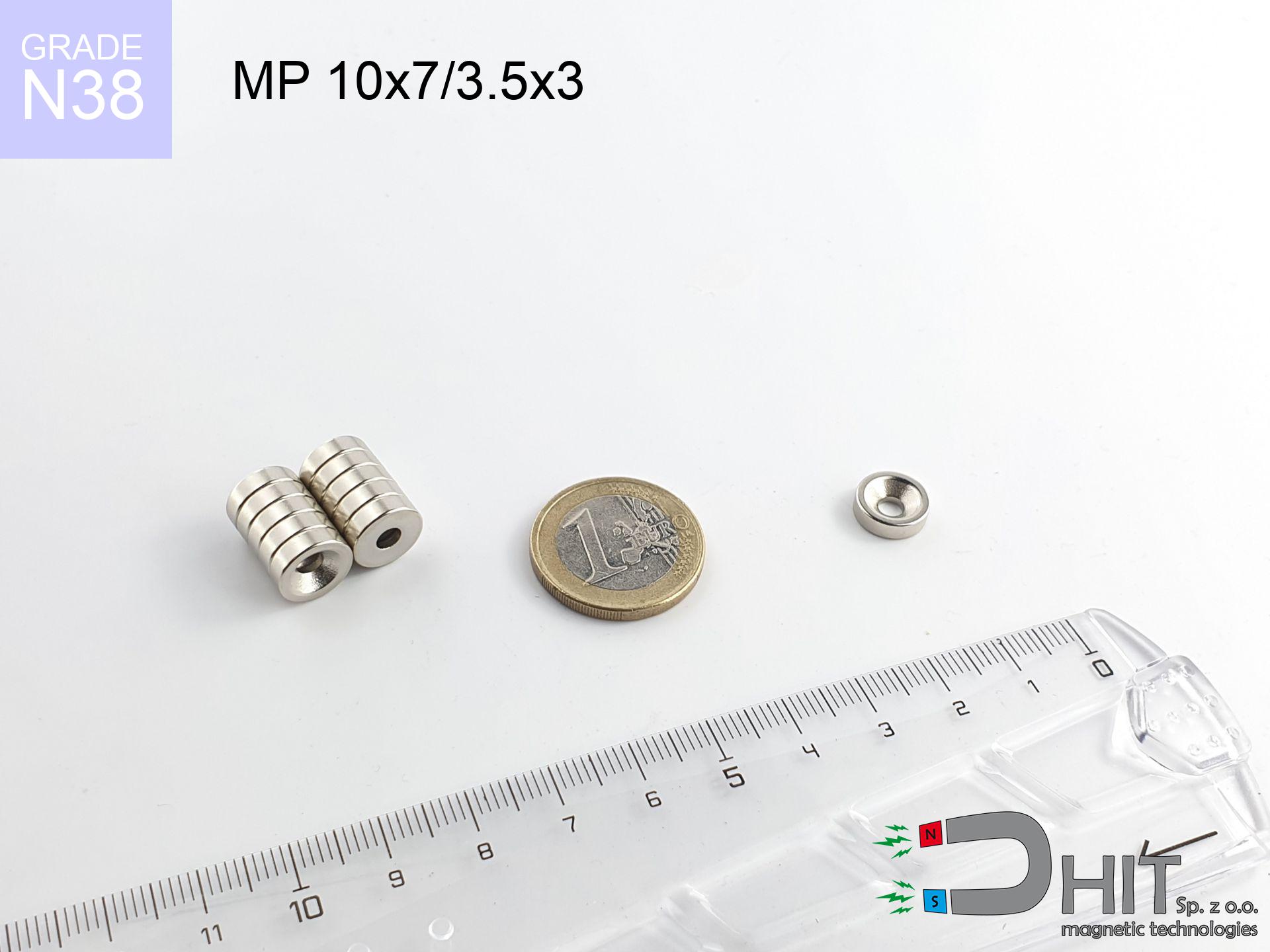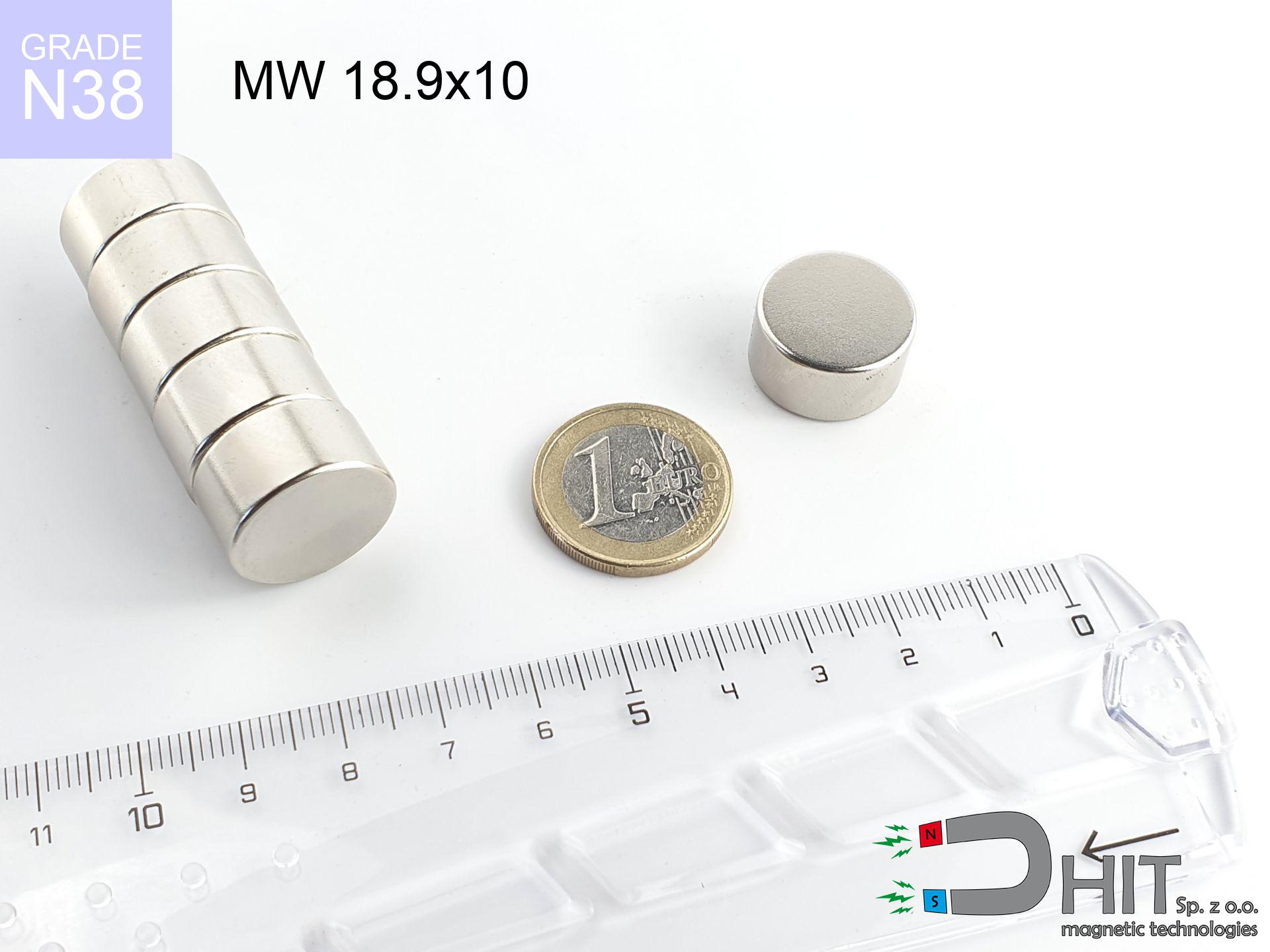UMP 75x25 [M10x3] GW F200 PLATINIUM / N52 - search holder
search holder
Catalog no 210422
GTIN/EAN: 5906301814078
Diameter Ø
75 mm [±1 mm]
Height
25 mm [±1 mm]
Weight
900 g
Load capacity
365.00 kg / 3579.43 N
Coating
[NiCuNi] Nickel
Magnetic Flux
~ 8 000 Gauss [±5%]
270.00 ZŁ with VAT / pcs + price for transport
219.51 ZŁ net + 23% VAT / pcs
bulk discounts:
Need more?
Call us now
+48 22 499 98 98
otherwise send us a note via
our online form
the contact section.
Weight and structure of a neodymium magnet can be reviewed on our
power calculator.
Orders placed before 14:00 will be shipped the same business day.
💡 Guide: How to choose a decent magnet and not get ripped off?
Don't be fooled by amateur online tests – go for certified quality and specific parameters that guarantee success:
- 📏 Magnet thickness in the casing (min. 10mm) – This is what matters most! Thin magnets are weak. Thanks to the 1cm thickness of N52 neodymium, your magnet "sees" metal even through thick rust and mud.
- 🛡️ Armored protection (Black Epoxy) – Forget about rust. This coating doesn't chip when hitting rocks and protects the magnet in water much better than regular nickel, which fails quickly.
- 🧲 Eyelets that don't steal power – Made of special non-magnetic steel, so they don't stick to the magnet and don't block the force. Important: mount only one eyelet at a time! Using 3 at once is a mistake that weakens the magnet.
- 🧶 Certified rope (min. 8mm) – You gain the certainty that your gear won't stay at the bottom. It's thick and comfortable, so it doesn't cut your fingers when pulling out heavy scrap metal.
- 🚀 Our advantage: We are the only ones combining the strongest N52 neodymium (10mm thick) with non-magnetic eyelets. This is real power and durability you won't find anywhere else.
Invest in solid equipment and enjoy the results!
Technical data - UMP 75x25 [M10x3] GW F200 PLATINIUM / N52 - search holder
Specification / characteristics - UMP 75x25 [M10x3] GW F200 PLATINIUM / N52 - search holder
| properties | values |
|---|---|
| Cat. no. | 210422 |
| GTIN/EAN | 5906301814078 |
| Production/Distribution | Dhit sp. z o.o. |
| Country of origin | Poland / China / Germany |
| Customs code | 85059029 |
| Diameter Ø | 75 mm [±1 mm] |
| Height | 25 mm [±1 mm] |
| Weight | 900 g |
| Load capacity ~ ? | 365.00 kg / 3579.43 N |
| Coating | [NiCuNi] Nickel |
| Series | PLATINUM |
| Holder Type | 2 sided |
| Material Type | Structural steel S235 (ferrous) |
| Magnetic Flux | ~ 8 000 Gauss [±5%] |
| Size/Mount Quantity | 3xM10 |
| Manufacturing Tolerance | ±1 mm |
Magnetic properties of material N52
| properties | values | units |
|---|---|---|
| remenance Br [min. - max.] ? | 14.2-14.7 | kGs |
| remenance Br [min. - max.] ? | 1420-1470 | mT |
| coercivity bHc ? | 10.8-12.5 | kOe |
| coercivity bHc ? | 860-995 | kA/m |
| actual internal force iHc | ≥ 12 | kOe |
| actual internal force iHc | ≥ 955 | kA/m |
| energy density [min. - max.] ? | 48-53 | BH max MGOe |
| energy density [min. - max.] ? | 380-422 | BH max KJ/m |
| max. temperature ? | ≤ 80 | °C |
Physical properties of sintered neodymium magnets Nd2Fe14B at 20°C
| properties | values | units |
|---|---|---|
| Vickers hardness | ≥550 | Hv |
| Density | ≥7.4 | g/cm3 |
| Curie Temperature TC | 312 - 380 | °C |
| Curie Temperature TF | 593 - 716 | °F |
| Specific resistance | 150 | μΩ⋅cm |
| Bending strength | 250 | MPa |
| Compressive strength | 1000~1100 | MPa |
| Thermal expansion parallel (∥) to orientation (M) | (3-4) x 10-6 | °C-1 |
| Thermal expansion perpendicular (⊥) to orientation (M) | -(1-3) x 10-6 | °C-1 |
| Young's modulus | 1.7 x 104 | kg/mm² |
Elemental analysis
| iron (Fe) | 64% – 68% |
| neodymium (Nd) | 29% – 32% |
| boron (B) | 1.1% – 1.2% |
| dysprosium (Dy) | 0.5% – 2.0% |
| coating (Ni-Cu-Ni) | < 0.05% |
Sustainability
| recyclability (EoL) | 100% |
| recycled raw materials | ~10% (pre-cons) |
| carbon footprint | low / zredukowany |
| waste code (EWC) | 16 02 16 |
Other deals
Strengths as well as weaknesses of rare earth magnets.
Advantages
- They virtually do not lose strength, because even after ten years the decline in efficiency is only ~1% (according to literature),
- They possess excellent resistance to weakening of magnetic properties when exposed to opposing magnetic fields,
- Thanks to the metallic finish, the surface of Ni-Cu-Ni, gold-plated, or silver gives an professional appearance,
- The surface of neodymium magnets generates a concentrated magnetic field – this is a key feature,
- Due to their durability and thermal resistance, neodymium magnets can operate (depending on the shape) even at high temperatures reaching 230°C or more...
- Due to the option of accurate forming and customization to individualized requirements, neodymium magnets can be created in a broad palette of forms and dimensions, which amplifies use scope,
- Huge importance in electronics industry – they are used in data components, electric motors, precision medical tools, as well as modern systems.
- Thanks to efficiency per cm³, small magnets offer high operating force, with minimal size,
Cons
- They are fragile upon heavy impacts. To avoid cracks, it is worth securing magnets in special housings. Such protection not only shields the magnet but also increases its resistance to damage
- When exposed to high temperature, neodymium magnets experience a drop in strength. Often, when the temperature exceeds 80°C, their strength decreases (depending on the size and shape of the magnet). For those who need magnets for extreme conditions, we offer [AH] versions withstanding up to 230°C
- Due to the susceptibility of magnets to corrosion in a humid environment, we advise using waterproof magnets made of rubber, plastic or other material immune to moisture, when using outdoors
- We recommend cover - magnetic holder, due to difficulties in realizing nuts inside the magnet and complex shapes.
- Possible danger related to microscopic parts of magnets pose a threat, when accidentally swallowed, which gains importance in the context of child safety. Furthermore, small elements of these devices are able to complicate diagnosis medical when they are in the body.
- Higher cost of purchase is one of the disadvantages compared to ceramic magnets, especially in budget applications
Pull force analysis
Optimal lifting capacity of a neodymium magnet – what contributes to it?
- with the contact of a yoke made of special test steel, guaranteeing full magnetic saturation
- possessing a thickness of min. 10 mm to ensure full flux closure
- with a surface free of scratches
- without any clearance between the magnet and steel
- for force acting at a right angle (in the magnet axis)
- in temp. approx. 20°C
Determinants of lifting force in real conditions
- Distance (between the magnet and the plate), since even a tiny distance (e.g. 0.5 mm) can cause a drastic drop in lifting capacity by up to 50% (this also applies to paint, corrosion or debris).
- Loading method – catalog parameter refers to pulling vertically. When slipping, the magnet exhibits much less (typically approx. 20-30% of maximum force).
- Wall thickness – the thinner the sheet, the weaker the hold. Magnetic flux penetrates through instead of converting into lifting capacity.
- Material type – the best choice is pure iron steel. Hardened steels may generate lower lifting capacity.
- Plate texture – smooth surfaces ensure maximum contact, which increases field saturation. Rough surfaces weaken the grip.
- Temperature – heating the magnet results in weakening of force. Check the maximum operating temperature for a given model.
Holding force was tested on the plate surface of 20 mm thickness, when the force acted perpendicularly, in contrast under attempts to slide the magnet the holding force is lower. In addition, even a minimal clearance between the magnet and the plate lowers the load capacity.
Safe handling of NdFeB magnets
Respect the power
Handle magnets consciously. Their powerful strength can shock even professionals. Stay alert and respect their power.
Swallowing risk
Only for adults. Small elements can be swallowed, leading to intestinal necrosis. Keep out of reach of kids and pets.
Threat to electronics
Do not bring magnets close to a wallet, computer, or screen. The magnetic field can destroy these devices and wipe information from cards.
Risk of cracking
Beware of splinters. Magnets can explode upon violent connection, launching shards into the air. Wear goggles.
Do not overheat magnets
Control the heat. Heating the magnet above 80 degrees Celsius will ruin its magnetic structure and strength.
Pacemakers
Warning for patients: Powerful magnets disrupt electronics. Keep at least 30 cm distance or ask another person to handle the magnets.
Pinching danger
Large magnets can crush fingers in a fraction of a second. Never place your hand betwixt two strong magnets.
Threat to navigation
GPS units and smartphones are extremely sensitive to magnetic fields. Close proximity with a strong magnet can ruin the internal compass in your phone.
Fire warning
Fire warning: Neodymium dust is highly flammable. Avoid machining magnets in home conditions as this risks ignition.
Nickel coating and allergies
A percentage of the population suffer from a hypersensitivity to nickel, which is the typical protective layer for neodymium magnets. Frequent touching can result in an allergic reaction. We strongly advise use protective gloves.

![Search magnet UMP 75x25 [M10x3] GW F200 PLATINIUM / N52 - GOLD Series Search magnet UMP 75x25 [M10x3] GW F200 PLATINIUM / N52 - GOLD Series](https://cdn3.dhit.pl/graphics/banners/magnet.webp)
![UMP 75x25 [M10x3] GW F200 PLATINIUM / N52 - search holder](https://cdn3.dhit.pl/graphics/products/ump-75x25-m10x3-gw-f200-platinium-tav.jpg)





